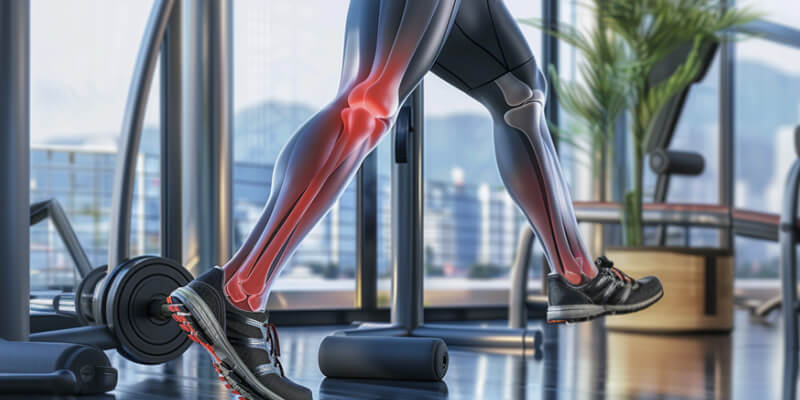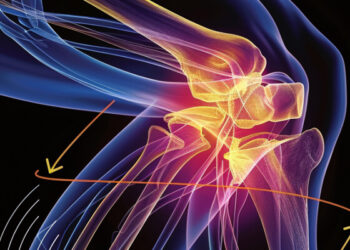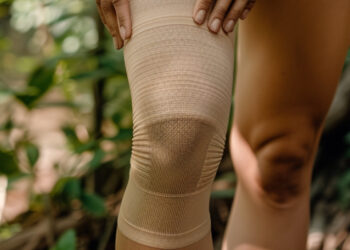Did you know that nearly 20% of adults in the United States suffer from knee pain related to osteoarthritis, making it one of the leading causes of disability? With a population seeking solutions for effective knee pain management, patients and healthcare providers alike are exploring different avenues like topical treatments, osteoarthritis treatments, oral nonsteroidal anti-inflammatory drugs (NSAIDs), joint injections, and physical therapy. While non-pharmacological interventions such as physical therapy garner widespread recommendations, there’s a growing interest in the direct, local application of relief—this is where the debate between knee pain relief patches and other treatment forms, including oral medications and injections, comes to light.
Despite exercise and weight management being considered gold standards in managing osteoarthritis pain, non-invasive alternatives such as NSAID-infused patches present an attractive option. These patches promise localized pain relief with a potentially reduced risk profile compared to their systemic counterparts—oral NSAIDs and joint injections. Yet, as with any medical treatment, it is imperative to consider efficacy alongside the potential for adverse effects.
Key Takeaways
- Understanding the full spectrum of knee pain management tactics is crucial for those affected by osteoarthritis.
- Topical NSAID patches may offer pain relief with fewer side effects compared to oral NSAIDs or joint injections.
- Evaluating the risks associated with oral NSAIDs is essential due to potential gastrointestinal and cardiovascular complications.
- Injection therapies provide direct relief but may carry limitations related to frequency of use and potential side effects over time.
- Physical therapy remains an essential non-drug approach, focusing on mobility improvement and pain reduction.
Understanding Knee Pain and Available Treatments
Knee discomfort is a common ailment that affects individuals from various walks of life, often impeding their daily activities and quality of life. This section delves into the etiology of knee pain, its manifestations, and the spectrum of treatments available that aim to offer arthritis relief and alleviate other knee-related conditions.
Causes and Symptoms of Knee Pain
The causes of knee pain are diverse, ranging from acute injuries, such as ligament tears and fractures, to more chronic issues like osteoarthritis – a prevalent form of arthritis involving the gradual deterioration of joint cartilage. Other contributing factors may include repetitive stress on the knee joint, obesity which places additional strain on the knee, and underlying inflammatory conditions like rheumatoid arthritis.
Common knee pain symptoms that individuals may experience include:
- Aching pain that worsens with activity
- Swelling and tenderness around the joint
- Stiffness, particularly in the morning or after periods of inactivity
- Reduced range of motion, making it difficult to fully straighten or bend the knee
- Instability or feeling of weakness in the knee
- Sounds of popping or crunching during movement
Overview of Treatment Modalities
Addressing knee pain symptoms effectively requires a comprehensive approach, often integrating both pharmacological and non-pharmacological strategies. The treatment plan can range from conservative methods to more advanced medical interventions, depending on the severity and underlying cause of the knee discomfort.
Below is a summary table of available treatment for knee pain, highlighting various options:
| Treatment Type | Purpose | Common Examples | Considerations |
|---|---|---|---|
| Over-the-counter (OTC) Medications | To reduce pain and inflammation | Acetaminophen, Ibuprofen | Generally safe for short-term use, risks increase with long-term use |
| Prescription Medications | For more severe pain or underlying conditions | Celecoxib, Naproxen | Prescribed by healthcare providers, higher potential for side effects |
| Topicals | Local pain relief with minimal systemic absorption | Diclofenac gel, Capsaicin cream | Lower risk of systemic side effects compared to oral medications |
| Injections | To directly target inflammation or add lubrication within the joint | Corticosteroid injections, Hyaluronic acid injections | May provide relief when other treatments fail, potential injection-site reactions |
| Physical Therapy | To improve mobility and strengthen muscles supporting the knee | Custom exercises and routines | Non-invasive, helps address the root causes of pain |
It is essential that individuals consult with healthcare professionals to identify the most suitable treatment for knee pain catered to their specific conditions and needs. Professional guidance is crucial, especially when integrating new treatment methods for arthritis relief and other knee-related issues.
Topical Solutions: Patches and Creams for Knee Pain
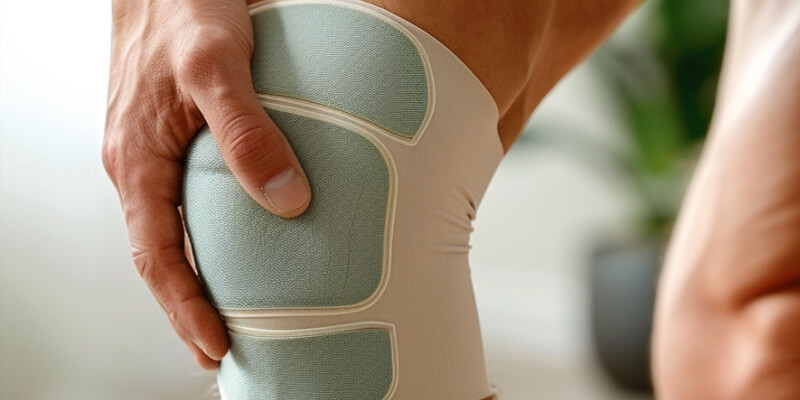
When it comes to managing knee pain, especially from conditions like osteoarthritis (OA), topical NSAIDs present a compelling treatment option. These unique formulations, which come in the form of patches, gels, and creams, cater to those seeking targeted pain relief without the systemic side effects commonly associated with oral medications.
Notable Mentions in Topical Pain Relief:
- Diclofenac gel: This NSAID offers anti-inflammatory benefits directly at the site of pain, instrumental for OA-related discomfort.
- Capsaicin cream: Derived from chili peppers, it provides a warming sensation that can reduce the feeling of pain.
- Lidocaine patches: These adhesive patches deliver lidocaine, a local anesthetic, to numb the painful area effectively.
- Pain relief creams: Often formulated with ingredients like menthol, these creams cool the skin and alleviate pain signals.
With a focus on safety and convenience, these topical solutions can be applied at home—a boon for patients who value ease and discretion in their treatment routines.
| Product Type | Active Ingredient | Application Duration | Notes |
|---|---|---|---|
| Diclofenac Gel | Diclofenac Sodium | Varies per directions | Apply to the affected knee 3-4 times daily |
| Capsaicin Cream | Capsaicin | Topical, as needed | Begins with a warming sensation that subsides to pain relief |
| Lidocaine Patches | Lidocaine | Up to 12 hours | Desensitizes aggravated nerves under the skin |
| Pain Relief Creams | Menthol, Camphor, others | Topical, as needed | Provides a cooling effect for pain relief |
The adaptability and local efficacy of these topical treatments make them a first-line recommendation for OA pain, particularly when systemic interventions are not ideal.
Knee Pain Relief Patches vs. Pills, Injections, and Therapy: Which is Right for You
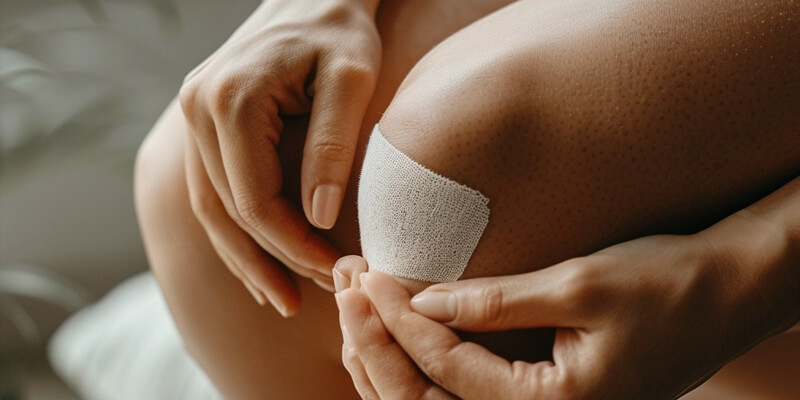
Choosing the ideal approach for managing knee pain involves comparing the benefits and limitations of various available treatments. While some individuals may find quick relief from oral medications, others may turn to different modalities such as knee injections or physical therapy. This section explores these options to help you make an informed decision about your knee pain management.
The Efficacy of Relief Patches Versus Oral Medications
When it comes to topical solutions, pain relief patches are increasingly recognized for their effectiveness in mitigating knee discomfort without the systemic side effects commonly associated with oral NSAIDs. The localized application of these patches ensures a targeted approach to pain management that can maintain daily functionality with minimal discomfort.
Comparative Analysis of Knee Injections
For a more direct approach to pain relief, corticosteroid injections may be recommended, offering temporary alleviation of knee pain. However, their use must be judicious due to potential side effects and diminishing returns over time. On the other hand, viscosupplementation, which entails hyaluronic acid injections, presents an extended duration of pain relief, despite ongoing debates regarding its overall efficacy.
| Treatment Type | Effect Duration | Frequency Limitation | Side Effects |
|---|---|---|---|
| Corticosteroid Injections | Short-term | Generally limited to a few per year | Potential joint damage with repeated use |
| Viscosupplementation | Longer-lasting (Several months) | No strict limits, but typically up to 3-5 injections per series | Injection site pain, swelling, and occasionally, joint inflammation |
The Role of Physical Therapy in Managing Knee Pain
As a holistic approach to joint health, physical therapy for knee pain plays a pivotal role in non-pharmacological management, promoting exercise and weight loss as central components of an effective regimen. Through personalized exercise plans and manual therapy techniques, physical therapy can significantly improve knee function and alleviate pain while fostering long-term wellness and mobility.
The Impact of Medication on Health: Risks and Side Effects
When managing knee pain, the balance between relief and potential harm is paramount. Medication safety is a significant concern, as the options available come with various risks and benefits. Understanding these factors is essential in making informed decisions regarding pain management strategies.
Understanding NSAIDs and Associated Risks
NSAID side effects are a critical patient concern. Though these medications are widely used for their effectiveness in reducing pain and inflammation, they are not without potential complications. Regular use of NSAIDs has been associated with gastrointestinal issues ranging from upset stomach to ulcers and bleeds, as well as an increased risk of cardiovascular diseases. The decision to use NSAIDs must be weighed carefully against these concerns.
Pros and Cons of Corticosteroid and HA Injections
Corticosteroids are potent anti-inflammatories that can provide substantial relief. However, corticosteroids risks include joint damage when used repeatedly over time, along with other systemic side effects. On the other hand, hyaluronic acid injections have gained popularity as a treatment due to their lower risk profile. HA injections, which supplement the joint’s natural lubrication, are often recommended for longer-term pain management and are suitable for those with certain comorbidities, such as diabetes.
Examining the Safety of Pain Relief Patches
For many patients, transdermal patches offer a pain relief method with a more favorable safety profile. These patches allow for the direct application of medication, minimizing systemic exposure and consequently reducing the risk of side effects associated with oral NSAIDs. This localized approach to pain management is particularly beneficial for those who cannot tolerate NSAIDs due to existing health issues.
While navigating the complexities of medication for knee pain, patients and healthcare providers must consider the spectrum of potential side effects, balancing efficacy with medication safety. Each treatment comes with its own set of considerations, and patient-specific factors must guide the choice of therapy.
Conclusion
As we explore the landscape of knee pain treatment comparison, it is evident that individuals grappling with this discomfort have several avenues to consider. With the introduction of patches and creams, those affected have access to optimal knee pain relief options that offer a more favorable safety profile compared to traditional NSAIDs and joint injections. This is particularly salient for patients who may experience adverse reactions or have contraindications with oral medications. The nuances of each treatment’s indications underscore the necessity for informed healthcare decisions.
It cannot be overstressed that the pain management strategies adopted should be reflective of a comprehensive understanding of the involved risks, the patient’s overall health status, and the specific efficacy of the treatments in question. As such, an evaluation conducted by healthcare professionals is indispensable for tailoring a pain management plan that is both efficacious and consonant with the patient’s needs. The role of non-invasive modalities, notably physical therapy, bolsters the paradigm of an integrated approach. This facet of treatment is rooted in movement and strengthening, accentuating its critical role in sustainable, long-term knee pain mitigation.
In conclusion, the journey to finding an effective knee pain relief regimen is complex and individualized. A harmonious blend of pharmacological and non-pharmacological methods, including physical therapy, is paramount. When navigating this journey, the emphasis should be placed on the balance between achieving symptomatic relief and maintaining the integrity of one’s health—making the consultation with knowledgeable healthcare providers pivotal in shaping a robust and personalized treatment strategy.
From the Author:
As a trainer, I see a lot of clients struggling with knee pain. It’s important to remember that there isn’t a single solution that works for everyone. Some people find relief with topical patches, others respond better to injections, and many benefit from a combination of physical therapy and targeted pain management. The key is finding what helps YOU feel your best and work with your doctor to maintain long-term knee health.
FAQ
What are the common causes of knee pain?
Knee pain can be caused by overuse, injuries, arthritis, and the natural degradation of the knee joint and its cartilage.
What symptoms indicate knee pain that needs attention?
Symptoms that warrant attention include difficulty in mobility, persistent discomfort, and pain that interferes with daily activities like walking and climbing stairs.
How do relief patches work for knee pain management?
Relief patches deliver topical NSAIDs directly to the affected area, providing pain relief with potentially fewer systemic side effects than oral medications.
Are topical solutions like diclofenac gels and capsaicin creams effective for osteoarthritis treatment?
Yes, topical solutions such as diclofenac gels and capsaicin creams can be effective for osteoarthritis treatment, as they provide localized pain relief with a lower risk of systemic side effects.
Can you compare the efficacy of relief patches to oral NSAIDs?
Relief patches offer comparable efficacy to oral NSAIDs for knee pain relief but with a reduced risk of side effects such as gastrointestinal issues and cardiovascular complications.
What are the limitations and potential side effects of knee injections like corticosteroids and hyaluronic acid?
Corticosteroid injections are limited in frequency and may lose effectiveness over time; they can also lead to further joint degradation. Hyaluronic acid injections may provide longer-lasting pain relief but their efficacy is a subject of debate, and they may still carry a risk of joint infection or inflammation.
How does physical therapy contribute to managing knee pain?
Physical therapy is a vital non-drug approach to managing knee pain. It focuses on weight loss and exercise to strengthen the knee joint, enhance mobility, and alleviate pain.
What are the side effects associated with long-term use of NSAIDs for knee pain?
Long-term use of NSAIDs can lead to gastrointestinal issues such as ulcers and bleeding, as well as an increased risk of heart attack and stroke.
Are pain relief patches a safer option than oral medications for patients with existing health concerns?
Yes, pain relief patches are a safer option for many patients as they minimize systemic absorption and reduce the risk of side effects associated with oral medications.
Can patients with diabetes safely use hyaluronic acid injections for knee pain?
Yes, patients with diabetes can safely use hyaluronic acid injections for knee pain relief, as these injections do not affect blood sugar levels.

